Do you have a question about the Dodge CHARGER 2020 and is the answer not in the manual?
Provides guidance on how to effectively use the manual and understand its content.
Warnings and guidelines regarding modifications or alterations to the vehicle's roadworthiness and safety.
Access owner's information through the Uconnect touchscreen system for better vehicle understanding.
Details about the key fob, remote keyless entry, and ignition system for vehicle access and operation.
Explains the operation of the keyless push button ignition system and its different modes.
How to program and recall seat, mirror, and steering column positions for driver convenience.
Information on manual and power seat adjustments, including comfort systems like heated and ventilated seats.
Guidance on adjusting head restraints for safety and minimizing neck injury risk in collisions.
Details on manual and power tilt/telescoping steering columns and heated steering wheel features.
Information on inside day/night mirrors, automatic dimming, and outside mirrors with approach lighting.
Explains the operation of the headlight switch for various lighting functions.
Information on the automatic high beam headlamp control system for enhanced night visibility.
Explanation of the rain sensing system that automatically activates wipers based on detected moisture.
Overview of manual climate control system functions and their locations on the touchscreen/faceplate.
Overview of automatic climate control system functions and their locations on the touchscreen.
Details on A/C, MAX A/C, Recirculation, Front/Rear Defrost, and temperature controls.
Operation of power window controls for all doors, including auto-down and anti-pinch features.
Instructions on how to express and manual open the power sunroof and sunshade.
Step-by-step instructions on how to open the vehicle's hood.
How to open the trunk from inside the vehicle or using the key fob.
Prerequisites and steps before programming the HomeLink® system for garage door openers.
Overview of key safety features designed to enhance vehicle stability and control.
Explanation of how ABS works to increase vehicle stability and brake performance.
Details on the advanced EBC system, including ABS, EBD, BAS, HSA, TCS, and ERM.
How BAS optimizes braking capability during emergency maneuvers by applying optimal pressure.
Explanation of ESC system for enhancing directional control and stability.
Description of different ESC modes: ESC On, Partial Off, and Full Off.
Features that assist the driver during various driving situations.
Explanation of BSM system using radar sensors to detect vehicles in blind spots.
How RCP aids the driver when backing out of parking spaces with obstructed views.
Details on FCW system providing audible/visual warnings and applying brake jerk for collision avoidance.
How TPMS warns the driver of low tire pressure and system malfunctions.
Information on vital safety features like seat belts, airbags, and child restraints.
Importance of seat belt usage and how they reduce injury severity in collisions.
Description of the BeltAlert feature to remind drivers and passengers to buckle up.
Operating instructions and safety considerations for lap/shoulder belts.
Overview of SRS components including airbags and their functions.
Details on front airbags, their operation, and mounting locations.
Details on supplemental seat-mounted side air bags (SABs) and their function.
How side airbags are designed to activate in certain side impacts.
Important steps and precautions before starting the vehicle engine.
Guidelines for shifting the transmission into PARK, REVERSE, and other gears.
Procedures for turning the engine on and off using the ENGINE START/STOP button.
Information about the supplemental AutoPark feature for assisting in placing the vehicle in PARK.
Recommendations for reliable starting in extremely cold temperatures using an engine block heater.
Steps to take if the engine fails to start, including procedures for a flooded engine.
How to operate the ignition switch with a push button using the key fob.
Guidelines for the initial break-in period for the drivetrain components.
How to apply and release the foot-operated parking brake.
Explanation of how Speed Control takes over accelerator operations at higher speeds.
Steps to activate the Speed Control system and indicating when it is on.
How to set a desired speed and adjust cruise control settings.
Instructions on how to increase or decrease the set speed for cruise control.
Steps to resume a previously set speed using the RES button.
Methods to deactivate Speed Control without erasing the set speed from memory.
Explanation of ACC for increased driving convenience and safety on highways.
How ACC with Stop handles bringing the vehicle to a standstill and resuming motion.
Information on warnings related to the ACC system and required maintenance.
Important precautions and potential issues to be aware of when driving with ACC.
How ACC may not detect offset vehicles or vehicles merging from side lanes.
How ACC may decrease speed on curves for stability reasons.
How ACC performance may be limited on hills due to vehicle load and steepness.
How ACC may not detect vehicles until they are fully in the lane, requiring driver attentiveness.
ACC does not react to stationary objects; driver must remain attentive.
Explanation of Normal Cruise Control for maintaining a fixed speed.
Provides visual and audible indications of distance to rear obstacles when backing up.
Details on the location and detection capabilities of the ParkSense sensors.
How the ParkSense warning screen displays distance and obstacle information.
Visual indicators and tones used by ParkSense to alert the driver of obstacles.
How to enable or disable the ParkSense system using the switch and Uconnect display.
Troubleshooting messages and actions for ParkSense system faults.
Explanation of LaneSense operation, lane detection, and driver warnings.
How LaneSense detects lane markings and provides haptic/visual warnings for lane departures.
How to configure LaneSense settings through the Uconnect system screen.
How to use hazard warning flashers as an emergency warning system.
Information on the ASSIST and SOS buttons in the rearview mirror for emergency assistance.
Procedure for initiating an SOS Call and the information transmitted to the operator.
Limitations of the SOS Call system, including regional restrictions and potential malfunctions.
Information about interior bulb types and numbers for replacement.
Step-by-step instructions for replacing front low/high beam headlamp bulbs.
General information about fuses and their role in protecting electrical systems.
Location and descriptions of fuses in the front power distribution center.
Location and descriptions of fuses in the rear power distribution center.
Instructions for accessing the jack and spare tire and changing a flat tire.
How to access the jack and spare tire stowed in the trunk.
Safety precautions and steps before lifting the vehicle with a jack.
Detailed warnings and steps for safely changing a tire.
Information on the tire service kit for temporary tire sealing and inflation.
Precautions and important information for using the tire service kit safely and effectively.
Step-by-step instructions for sealing a tire with the service kit.
Procedures for jump starting a vehicle with a discharged battery using jumper cables.
Actions to take to reduce potential for overheating and steps for impending overheat conditions.
How to use the manual park release to move the vehicle when the transmission won't shift out of PARK.
Techniques for moving a vehicle stuck in mud, sand, or snow using a rocking motion.
Procedures for towing a disabled vehicle using a commercial towing service.
Procedures for towing a disabled vehicle using a commercial towing service.
Information on the Enhanced Accident Response System and its functions.
Purpose of the EDR in recording vehicle data during crashes for analysis.
Maintenance schedules for 3.6L and 5.7L engines based on mileage or time.
Specific maintenance intervals for vehicles operated under severe duty conditions.
Detailed maintenance schedule table for 3.6L and 5.7L engines.
Maintenance services for 6.2L Supercharged and 6.4L engines for optimal performance.
Engine oil change recommendations for vehicles used in heavy duty or severe conditions.
Information on the Vehicle Identification Number (VIN) location and its importance.
Explanation of the dual hydraulic brake systems and loss of power assist.
Importance of proper lug nut/bolt torque for safe wheel mounting.
Detailed torque specifications for base and SRT model wheels.
Recommended fuel octane ratings and types for different engines.
Warning against using E-85 fuel in non-flex fuel vehicles due to potential damage.
Guidelines for maintaining vehicle performance and avoiding fuel system issues.
Precautions to prevent carbon monoxide poisoning from exhaust gases.
Table of fluid capacities for fuel, engine oil, and cooling system for non-SRT models.
Table of fluid capacities for fuel, engine oil, cooling system, and intercooler for SRT models.
Recommended fluids, lubricants, and genuine parts for the engine and chassis components.
Specific fluid and lubricant recommendations for the engine.
Information about the Uconnect system and its owner's manual supplement.
Explanation of vehicle connectivity and security features to prevent unauthorized access.
How to access and change customer-programmable features via touchscreen and faceplate buttons.
Details on programmable features for the Uconnect 4 system.
Details on programmable features for the Uconnect 4C/4C NAV system.
How to select units of measurement for display in the instrument cluster and navigation system.
Settings related to voice response length and command list display.
Settings for syncing time with GPS and setting time hours.
Settings for ParkView Backup Camera Delay and Active Guidelines.
Settings for Forward Collision Warning, Active Braking, Electric Power Steering, and ParkSense.
Adjusts sensitivity for FCW warnings based on relative vehicle distance.
Setting for FCW active braking that includes Advanced Brake Assist.
Option to change the default electric power steering setting (Normal, Sport, Comfort).
Options to enable ParkSense alerts with sound only or sound and display.
Adjusts the chime volume for Rear ParkSense alerts.
Options to activate or deactivate Blind Spot Alert features.
Information on enabling the Hill Start Assist system.
Information on activating paddle shifters for manual gear selection.
Settings for rain sensing auto wipers, tilt side mirrors in reverse, and headlights with wipers.
Settings for headlight off delay, illumination on approach, headlights with wipers, auto dim high beams, and daytime running lights.
Settings for auto door locks, auto unlock on exit, and flash lights with lock.
Feature for exterior lights to flash when doors are locked/unlocked.
Programs remote locks to open all or only the driver's door with the first fob press.
Lock/unlock vehicle doors without using key fob buttons via passive entry.
Automatic recall of settings stored to memory via key fob for driver convenience.
Settings for auto-on heated/vented seats and steering wheel, and easy exit seat.
Settings for headlight off delay and power delay for various features after engine shutdown.
Settings for equalizer, balance/fade, speed adjusted volume, surround sound, AUX offset, and auto play.
Adjusts bass, mid, and treble settings for audio output.
Adjusts audio volume relative to vehicle speed automatically.
Activates simulated surround sound mode for an immersive audio experience.
Tunes audio level for portable devices connected via AUX input.
Allows media device to play music automatically upon connection.
Settings for Do Not Disturb, Paired Phones, Smartphone Projection, and Bluetooth pairing.
Setup options for SiriusXM® including tune start, channel skip, and subscription information.
Options to reset app drawer, restore apps, restore settings, clear personal data, and modem reset.
Removes all personal data including Bluetooth devices and presets from the system.
Displays system software version and allows map updates via USB.
Tips for preparing for service appointments and communicating with dealers.
Advice on bringing necessary documents and discussing charges for warranty work.
Guidance on creating a written list of vehicle problems for service advisors.
Tips for prioritizing service requests and arranging rental vehicles.
Information on contacting the manufacturer for assistance with products and services.
Terms and provisions of FCA US LLC warranties applicable to the vehicle.
Information on Mopar fluids, lubricants, parts, and accessories for vehicle maintenance.
How to report vehicle safety defects to NHTSA and FCA US LLC.
Contact information and procedures for reporting safety defects in the US.
Contact information for Canadian customers to report safety defects.
Information on purchased service contracts for protection against unexpected repair costs.
Assistance options for customers with hearing or speech impairments via TDD/TTY.
Provides guidance on how to effectively use the manual and understand its content.
Warnings and guidelines regarding modifications or alterations to the vehicle's roadworthiness and safety.
Access owner's information through the Uconnect touchscreen system for better vehicle understanding.
Details about the key fob, remote keyless entry, and ignition system for vehicle access and operation.
Explains the operation of the keyless push button ignition system and its different modes.
How to program and recall seat, mirror, and steering column positions for driver convenience.
Information on manual and power seat adjustments, including comfort systems like heated and ventilated seats.
Guidance on adjusting head restraints for safety and minimizing neck injury risk in collisions.
Details on manual and power tilt/telescoping steering columns and heated steering wheel features.
Information on inside day/night mirrors, automatic dimming, and outside mirrors with approach lighting.
Explains the operation of the headlight switch for various lighting functions.
Information on the automatic high beam headlamp control system for enhanced night visibility.
Explanation of the rain sensing system that automatically activates wipers based on detected moisture.
Overview of manual climate control system functions and their locations on the touchscreen/faceplate.
Overview of automatic climate control system functions and their locations on the touchscreen.
Details on A/C, MAX A/C, Recirculation, Front/Rear Defrost, and temperature controls.
Operation of power window controls for all doors, including auto-down and anti-pinch features.
Instructions on how to express and manual open the power sunroof and sunshade.
Step-by-step instructions on how to open the vehicle's hood.
How to open the trunk from inside the vehicle or using the key fob.
Prerequisites and steps before programming the HomeLink® system for garage door openers.
Overview of key safety features designed to enhance vehicle stability and control.
Explanation of how ABS works to increase vehicle stability and brake performance.
Details on the advanced EBC system, including ABS, EBD, BAS, HSA, TCS, and ERM.
How BAS optimizes braking capability during emergency maneuvers by applying optimal pressure.
Explanation of ESC system for enhancing directional control and stability.
Description of different ESC modes: ESC On, Partial Off, and Full Off.
Features that assist the driver during various driving situations.
Explanation of BSM system using radar sensors to detect vehicles in blind spots.
How RCP aids the driver when backing out of parking spaces with obstructed views.
Details on FCW system providing audible/visual warnings and applying brake jerk for collision avoidance.
How TPMS warns the driver of low tire pressure and system malfunctions.
Information on vital safety features like seat belts, airbags, and child restraints.
Importance of seat belt usage and how they reduce injury severity in collisions.
Description of the BeltAlert feature to remind drivers and passengers to buckle up.
Operating instructions and safety considerations for lap/shoulder belts.
Overview of SRS components including airbags and their functions.
Details on front airbags, their operation, and mounting locations.
Details on supplemental seat-mounted side air bags (SABs) and their function.
How side airbags are designed to activate in certain side impacts.
Important steps and precautions before starting the vehicle engine.
Guidelines for shifting the transmission into PARK, REVERSE, and other gears.
Procedures for turning the engine on and off using the ENGINE START/STOP button.
Information about the supplemental AutoPark feature for assisting in placing the vehicle in PARK.
Recommendations for reliable starting in extremely cold temperatures using an engine block heater.
Steps to take if the engine fails to start, including procedures for a flooded engine.
How to operate the ignition switch with a push button using the key fob.
Guidelines for the initial break-in period for the drivetrain components.
How to apply and release the foot-operated parking brake.
Explanation of how Speed Control takes over accelerator operations at higher speeds.
Steps to activate the Speed Control system and indicating when it is on.
How to set a desired speed and adjust cruise control settings.
Instructions on how to increase or decrease the set speed for cruise control.
Steps to resume a previously set speed using the RES button.
Methods to deactivate Speed Control without erasing the set speed from memory.
Explanation of ACC for increased driving convenience and safety on highways.
How ACC with Stop handles bringing the vehicle to a standstill and resuming motion.
Information on warnings related to the ACC system and required maintenance.
Important precautions and potential issues to be aware of when driving with ACC.
How ACC may not detect offset vehicles or vehicles merging from side lanes.
How ACC may decrease speed on curves for stability reasons.
How ACC performance may be limited on hills due to vehicle load and steepness.
How ACC may not detect vehicles until they are fully in the lane, requiring driver attentiveness.
ACC does not react to stationary objects; driver must remain attentive.
Explanation of Normal Cruise Control for maintaining a fixed speed.
Provides visual and audible indications of distance to rear obstacles when backing up.
Details on the location and detection capabilities of the ParkSense sensors.
How the ParkSense warning screen displays distance and obstacle information.
Visual indicators and tones used by ParkSense to alert the driver of obstacles.
How to enable or disable the ParkSense system using the switch and Uconnect display.
Troubleshooting messages and actions for ParkSense system faults.
Explanation of LaneSense operation, lane detection, and driver warnings.
How LaneSense detects lane markings and provides haptic/visual warnings for lane departures.
How to configure LaneSense settings through the Uconnect system screen.
How to use hazard warning flashers as an emergency warning system.
Information on the ASSIST and SOS buttons in the rearview mirror for emergency assistance.
Procedure for initiating an SOS Call and the information transmitted to the operator.
Limitations of the SOS Call system, including regional restrictions and potential malfunctions.
Information about interior bulb types and numbers for replacement.
Step-by-step instructions for replacing front low/high beam headlamp bulbs.
General information about fuses and their role in protecting electrical systems.
Location and descriptions of fuses in the front power distribution center.
Location and descriptions of fuses in the rear power distribution center.
Instructions for accessing the jack and spare tire and changing a flat tire.
How to access the jack and spare tire stowed in the trunk.
Safety precautions and steps before lifting the vehicle with a jack.
Detailed warnings and steps for safely changing a tire.
Information on the tire service kit for temporary tire sealing and inflation.
Precautions and important information for using the tire service kit safely and effectively.
Step-by-step instructions for sealing a tire with the service kit.
Procedures for jump starting a vehicle with a discharged battery using jumper cables.
Actions to take to reduce potential for overheating and steps for impending overheat conditions.
How to use the manual park release to move the vehicle when the transmission won't shift out of PARK.
Techniques for moving a vehicle stuck in mud, sand, or snow using a rocking motion.
Procedures for towing a disabled vehicle using a commercial towing service.
Procedures for towing a disabled vehicle using a commercial towing service.
Information on the Enhanced Accident Response System and its functions.
Purpose of the EDR in recording vehicle data during crashes for analysis.
Maintenance schedules for 3.6L and 5.7L engines based on mileage or time.
Specific maintenance intervals for vehicles operated under severe duty conditions.
Detailed maintenance schedule table for 3.6L and 5.7L engines.
Maintenance services for 6.2L Supercharged and 6.4L engines for optimal performance.
Engine oil change recommendations for vehicles used in heavy duty or severe conditions.
Information on the Vehicle Identification Number (VIN) location and its importance.
Explanation of the dual hydraulic brake systems and loss of power assist.
Importance of proper lug nut/bolt torque for safe wheel mounting.
Detailed torque specifications for base and SRT model wheels.
Recommended fuel octane ratings and types for different engines.
Warning against using E-85 fuel in non-flex fuel vehicles due to potential damage.
Guidelines for maintaining vehicle performance and avoiding fuel system issues.
Precautions to prevent carbon monoxide poisoning from exhaust gases.
Table of fluid capacities for fuel, engine oil, and cooling system for non-SRT models.
Table of fluid capacities for fuel, engine oil, cooling system, and intercooler for SRT models.
Recommended fluids, lubricants, and genuine parts for the engine and chassis components.
Specific fluid and lubricant recommendations for the engine.
Information about the Uconnect system and its owner's manual supplement.
Explanation of vehicle connectivity and security features to prevent unauthorized access.
How to access and change customer-programmable features via touchscreen and faceplate buttons.
Details on programmable features for the Uconnect 4 system.
Details on programmable features for the Uconnect 4C/4C NAV system.
How to select units of measurement for display in the instrument cluster and navigation system.
Settings related to voice response length and command list display.
Settings for syncing time with GPS and setting time hours.
Settings for ParkView Backup Camera Delay and Active Guidelines.
Settings for Forward Collision Warning, Active Braking, Electric Power Steering, and ParkSense.
Adjusts sensitivity for FCW warnings based on relative vehicle distance.
Setting for FCW active braking that includes Advanced Brake Assist.
Option to change the default electric power steering setting (Normal, Sport, Comfort).
Options to enable ParkSense alerts with sound only or sound and display.
Adjusts the chime volume for Rear ParkSense alerts.
Options to activate or deactivate Blind Spot Alert features.
Information on enabling the Hill Start Assist system.
Information on activating paddle shifters for manual gear selection.
Settings for rain sensing auto wipers, tilt side mirrors in reverse, and headlights with wipers.
Settings for headlight off delay, illumination on approach, headlights with wipers, auto dim high beams, and daytime running lights.
Settings for auto door locks, auto unlock on exit, and flash lights with lock.
Feature for exterior lights to flash when doors are locked/unlocked.
Programs remote locks to open all or only the driver's door with the first fob press.
Lock/unlock vehicle doors without using key fob buttons via passive entry.
Automatic recall of settings stored to memory via key fob for driver convenience.
Settings for auto-on heated/vented seats and steering wheel, and easy exit seat.
Settings for headlight off delay and power delay for various features after engine shutdown.
Settings for equalizer, balance/fade, speed adjusted volume, surround sound, AUX offset, and auto play.
Adjusts bass, mid, and treble settings for audio output.
Adjusts audio volume relative to vehicle speed automatically.
Activates simulated surround sound mode for an immersive audio experience.
Tunes audio level for portable devices connected via AUX input.
Allows media device to play music automatically upon connection.
Settings for Do Not Disturb, Paired Phones, Smartphone Projection, and Bluetooth pairing.
Setup options for SiriusXM® including tune start, channel skip, and subscription information.
Options to reset app drawer, restore apps, restore settings, clear personal data, and modem reset.
Removes all personal data including Bluetooth devices and presets from the system.
Displays system software version and allows map updates via USB.
Tips for preparing for service appointments and communicating with dealers.
Advice on bringing necessary documents and discussing charges for warranty work.
Guidance on creating a written list of vehicle problems for service advisors.
Tips for prioritizing service requests and arranging rental vehicles.
Information on contacting the manufacturer for assistance with products and services.
Terms and provisions of FCA US LLC warranties applicable to the vehicle.
Information on Mopar fluids, lubricants, parts, and accessories for vehicle maintenance.
How to report vehicle safety defects to NHTSA and FCA US LLC.
Contact information and procedures for reporting safety defects in the US.
Contact information for Canadian customers to report safety defects.
Information on purchased service contracts for protection against unexpected repair costs.
Assistance options for customers with hearing or speech impairments via TDD/TTY.
| Brand | Dodge |
|---|---|
| Model | CHARGER 2020 |
| Category | Automobile |
| Language | English |


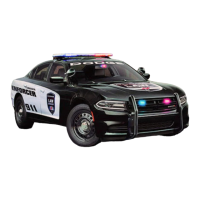
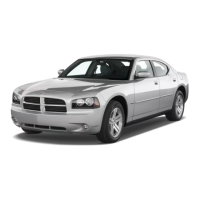
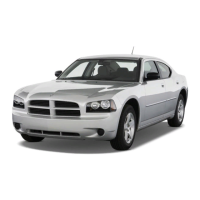
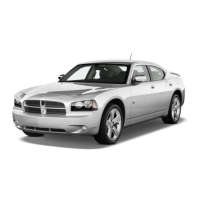
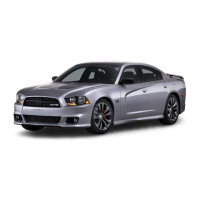



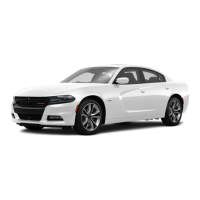

